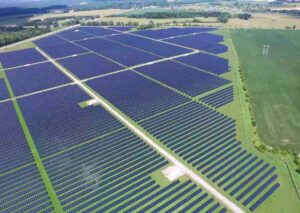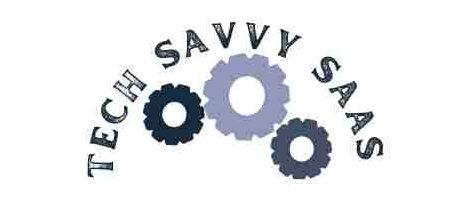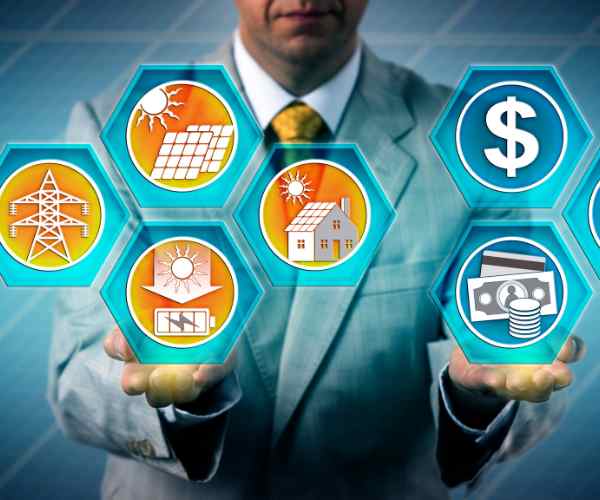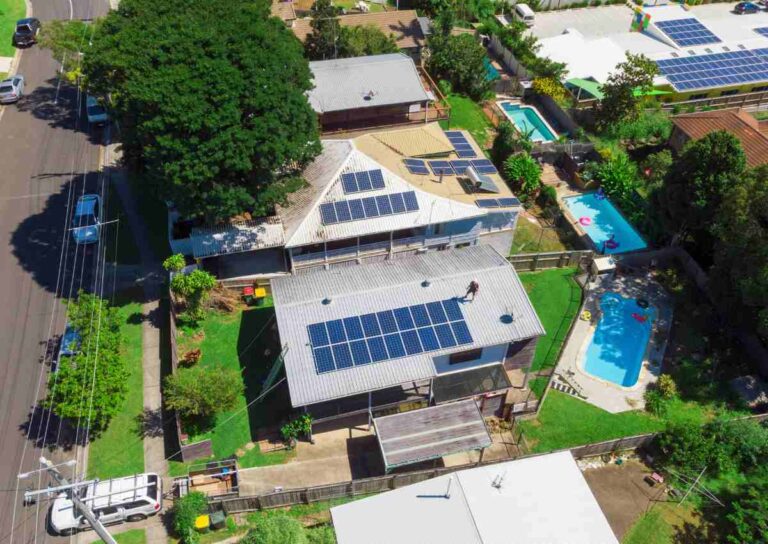The global shift towards sustainability has spotlighted the pivotal role of renewable energy. The urgency to address climate change and reduce carbon footprints has elevated renewable energy to the forefront of discussions in various industries. This introduction provides a concise exploration of why renewable energy is gaining prominence and how it has become a critical factor in shaping the trajectory of technological innovation.
The intersection of renewable energy and technological advancements forms a symbiotic relationship beyond mere coexistence. As technological landscapes evolve, they increasingly rely on sustainable energy sources to meet the demands of a dynamic world. This section delves into the interconnectedness of renewable energy and tech innovation, setting the stage for a comprehensive analysis of their impact on each other.

The Current Energy Landscape
Traditional energy sources, while having fueled the progress of human civilization for centuries, come with inherent drawbacks. This section critically examines the prevailing energy landscape, highlighting the limitations and environmental implications of relying on fossil fuels and non-renewable resources. By understanding the shortcomings of current energy practices, we pave the way for exploring the compelling alternatives presented by renewable sources.
Rise of Renewable Energy Sources in the Tech Industry
In response to the challenges posed by traditional energy sources, the tech industry has undergone a transformative shift towards embracing renewable energy. This subsection investigates the increasing adoption of sustainable practices within the tech sector, emphasizing the significance of this paradigm shift. From solar and wind power to innovative green technologies, the tech industry is not only recognizing the need for change but actively driving it.
- Energy-Efficient Hardware: Invest in and promote the development of energy-efficient hardware to reduce the energy consumption of tech devices and infrastructure.
- Renewable-Powered Data Centers: Explore opportunities to transition data centers to rely on renewable energy sources, such as solar or wind power, to decrease environmental impact and operational costs.
- Collaborate with Renewable Energy Providers: Foster partnerships with renewable energy providers to ensure a stable and sustainable energy supply, contributing to corporate sustainability goals.
- Explore Energy Harvesting Technologies: Embrace innovations in energy harvesting technologies to create self-sufficient electronic devices that utilize renewable sources for power.
- Implement Green Computing Practices: Adopt green computing practices, including responsible manufacturing, efficient design, and sustainable disposal, to minimize the environmental impact of tech operations.
- Engage in Industry-Wide Collaborations: Participate in industry-wide collaborations and initiatives focused on sustainability to share best practices and drive collective efforts towards a greener tech ecosystem.
- Address Challenges Strategically: Identify and address challenges in implementing renewable energy in tech strategically, considering solutions like energy storage, regulatory advocacy, and financial incentives.
- Anticipate Future Trends: Stay informed about emerging technologies, such as quantum computing and advancements in materials science, to anticipate their potential role in driving sustainable tech innovation.
- Commit to Long-Term Renewable Energy Goals: Set and commit to long-term renewable energy goals, aligning with global sustainability initiatives, to drive a lasting impact on the tech industry.
- Educate and Involve Teams: Educate teams about the importance of renewable energy and involve them in sustainability initiatives to create a culture of environmental responsibility within the organization.
Sustainable Tech Infrastructure
Integration of Renewable Energy in Data Centers- As technology advances, the demand for data storage and processing power has soared, leading to a critical examination of the environmental impact of data centers. This section focuses on the revolutionary concept of integrating renewable energy in data centers. By harnessing the power of solar, wind, and other sustainable sources, tech companies are reducing their carbon footprint and setting a new standard for energy-efficient infrastructure.
The shift towards renewable energy in data centers involves a holistic approach, encompassing the development of energy storage solutions and the implementation of intelligent grids. Through this integration, the tech industry aligns its operations with eco-friendly practices, demonstrating a commitment to sustainable tech infrastructure.
Advancements in Energy-Efficient Hardware
In addition to rethinking energy sources, the tech industry is driving innovation in hardware design to optimize energy efficiency. This subsection explores the latest advancements in energy-efficient hardware, ranging from processors and servers to consumer electronics. Engineers and designers are pushing the boundaries of what is possible, creating devices that deliver high performance and operate with minimal energy consumption.
From low-power components to sophisticated cooling systems, these advancements are both environmentally conscious and economically beneficial. As the tech sector invests in research and development, the result is cutting-edge hardware solutions that pave the way for a more sustainable and energy-conscious future.
Green Computing
Green computing, a burgeoning field within the tech industry, focuses on developing and implementing environmentally friendly practices throughout the lifecycle of computing systems. This section provides an in-depth overview of green computing practices, encompassing energy-efficient design, responsible manufacturing, and sustainable disposal. By adopting green computing principles, tech companies can significantly reduce their environmental impact and contribute to a more sustainable industry.
Case Studies of Tech Companies Adopting Sustainable Computing
Real-world examples speak volumes about the feasibility and benefits of green computing. This subsection presents case studies of tech companies adopting sustainable computing, showcasing industry leaders who have successfully integrated green practices into their operations. From utilizing recycled materials in hardware production to implementing energy-saving algorithms in software development, these case studies provide insights into the diverse strategies employed by tech giants to champion sustainability.
As we navigate these sustainable tech initiatives, the synergies between renewable energy and technological innovation become increasingly evident. The journey towards a greener, more efficient tech industry is unfolding, driven by a collective commitment to a sustainable future. Stay tuned for the subsequent sections, where we explore the intersection of renewable energy and electronics and the transformative impact on smart grids and the Internet of Things (IoT).
Renewable Energy in Electronics
Exploration of Renewable Energy Applications in Electronic Devices- In the quest for a sustainable future, the tech industry is extending its commitment to renewable energy beyond infrastructure to the devices that define our daily lives. This section embarks on an in-depth exploration of renewable energy applications in electronic devices. From smartphones to wearables, integrating solar panels, energy-efficient batteries, and other innovative solutions is reshaping the landscape of electronic technology.
The rise of energy-harvesting capabilities in consumer electronics reduces dependency on traditional power sources and offers users the convenience of prolonged battery life. We delve into the groundbreaking applications that exemplify the marriage of cutting-edge electronics and eco-friendly energy sources.
Innovations in Energy Harvesting Technologies
Advancements in energy harvesting technologies are at the forefront of the sustainable electronics revolution. This subsection examines the latest innovations in energy harvesting technologies, including piezoelectric materials, kinetic energy capture, and advancements in photovoltaic cells. These innovations are enhancing the efficiency of electronic devices and opening up new possibilities for off-grid applications.
As tech companies invest in research and development, the potential for autonomous electronic devices becomes increasingly tangible. These innovations, from self-charging wearables to energy-autonomous sensors, pave the way for a future where electronic gadgets seamlessly integrate with renewable energy sources.
Smart Grids and IoT
The intersection of renewable energy and technology extends beyond individual devices to the broader infrastructure that powers our interconnected world. This section explores the role of renewable energy in powering intelligent grids, which are at the heart of the modern energy ecosystem. By leveraging renewable sources such as solar and wind power, smart grids offer a dynamic and sustainable solution to the challenges posed by traditional energy distribution systems.
Role of Renewable Energy in Powering Smart Grids
Smart grids represent a paradigm shift in how energy is generated, distributed, and consumed. This subsection delves into the intricate role of renewable energy in powering intelligent grids. From decentralized energy generation to real-time monitoring and optimization, renewable sources are pivotal in creating resilient, eco-friendly energy infrastructures.
As intelligent grids evolve, their ability to integrate renewable energy sources reduces environmental impact and enhances energy distribution’s reliability and efficiency. Case studies and real-world examples demonstrate the transformative effects of renewable energy on the functionality and sustainability of smart grids.
Impact of IoT in Optimizing Energy Consumption
The synergy between renewable energy and the Internet of Things (IoT) introduces a new dimension to energy management. This subsection explores the impact of IoT in optimizing energy consumption within the context of smart grids. IoT enables real-time data collection and analysis through interconnected devices and sensors, empowering smart grids to adapt and maximize energy distribution based on demand and availability.
From smart meters that provide granular insights into energy usage to intelligent appliances that adjust their power consumption patterns, the integration of IoT in smart grids enhances efficiency and sustainability. The collaborative efforts of renewable energy and IoT technologies are reshaping how we manage and consume energy, contributing to a more intelligent and environmentally conscious future.
Collaborative Initiatives
Examples of Tech Companies Partnering with Renewable Energy Providers- In pursuing a sustainable future, collaboration between the tech industry and renewable energy providers has emerged as a powerful force for positive change. This section explores compelling examples of tech companies partnering with renewable energy providers. From major corporations to innovative startups, these partnerships signify a shared commitment to reducing environmental impact and fostering a more sustainable energy ecosystem.
By forming alliances with renewable energy providers, tech companies gain access to a diverse range of sustainable energy sources, including wind, solar, and hydropower. These collaborations not only contribute to the reduction of carbon footprints but also serve as exemplars of corporate responsibility.
Joint Efforts for a Sustainable Future
The transition to a sustainable future requires collective action and joint efforts from various stakeholders. This subsection delves into the overarching theme of joint efforts for a sustainable future. Beyond individual partnerships, collaborative initiatives involving government bodies, non-profit organizations, and the wider community are essential for achieving meaningful and lasting change.
Tech companies are increasingly engaging in industry-wide collaborations, sharing best practices, and participating in initiatives that promote sustainability. Whether through consortiums focused on renewable energy research or global commitments to achieve carbon neutrality, these joint efforts underscore the industry’s recognition of the collective responsibility to address environmental challenges.
Challenges and Solutions
Addressing Challenges in Implementing Renewable Energy in Tech- While the benefits of integrating renewable energy into tech operations are substantial, challenges persist in the path toward widespread adoption. This section identifies and explores the critical challenges in implementing renewable energy in tech. From initial infrastructure investments to grid integration complexities, understanding these challenges is crucial for devising practical strategies.
Common challenges include:
- The intermittency of renewable sources.
- The need for significant upfront investments.
- Navigating regulatory landscapes.
By acknowledging these hurdles, the tech industry can develop targeted solutions to overcome obstacles and drive the sustainable transformation of its operations.
Solutions and Strategies for a Smoother Transition
Addressing challenges requires innovative solutions and strategic planning. This subsection delves into solutions and strategies for a smoother transition to renewable energy in the tech sector. It examines the role of technological advancements, policy advocacy, and financial incentives in facilitating a seamless integration of sustainable practices.
From implementing energy storage technologies to enhance reliability to developing scalable renewable energy projects, tech companies are actively exploring diverse strategies. Additionally, engaging policymakers to advocate for supportive regulations and incentives is crucial for creating an environment conducive to sustainable tech practices.
Predictions on the Continued Impact of Renewable Energy on Tech
As we peer into the future, the trajectory of technology and its relationship with renewable energy appears increasingly intertwined. This section offers insightful predictions on the continued impact of renewable energy on tech. Anticipating the evolution of this symbiotic relationship involves considering factors such as technological advancements, regulatory developments, and shifts in consumer expectations.
One prediction centers around the mainstream adoption of renewable energy sources across the tech industry. As advancements in energy storage technologies and grid integration solutions continue, we can expect a broader embrace of solar, wind, and other sustainable sources. This aligns with global sustainability goals and positions tech companies as pioneers in driving environmental stewardship.
Furthermore, predictions may highlight the emergence of new business models centered around renewable energy, with tech companies leveraging innovative approaches to generate and distribute power. Integrating artificial intelligence (AI) and machine learning into renewable energy systems will likely enhance efficiency and optimize resource utilization.
Emerging Technologies and Their Potential Role in Sustainable Tech Innovation
The future of sustainable tech innovation is closely tied to the development and integration of emerging technologies. This subsection explores the landscape of emerging technologies and their potential role in sustainable tech innovation. From advancements in materials science to breakthroughs in quantum computing, these technologies promise to reshape the way we approach sustainability within the tech industry.
Quantum computing, for example, has the potential to revolutionize energy optimization algorithms, enabling more precise control of energy consumption in computing systems. Innovations in materials science may lead to the development of more efficient and environmentally friendly hardware components. Additionally, the convergence of nanotechnology and renewable energy may unlock new possibilities for energy harvesting at the microscale.
As tech companies continue to invest in research and development, these emerging technologies are poised to play a pivotal role in driving the next wave of sustainable innovation. By anticipating and embracing these advancements, the tech industry can stay at the forefront of the global transition toward a greener and more sustainable future.
How does integrating renewable energy sources impact the efficiency of data centers in the tech industry?
Integrating renewable energy sources in data centers, such as solar and wind power, significantly impacts their efficiency. By harnessing sustainable energy, data centers can reduce reliance on traditional power sources, leading to lower operational costs and a diminished environmental footprint. This shift aligns with global sustainability goals and promotes the development of more energy-efficient data center technologies, fostering a more sustainable and eco-friendly tech infrastructure.
Can you provide examples of tech companies that have successfully partnered with renewable energy providers, and what benefits have emerged from such collaborations?
Certainly. Numerous tech companies have embraced collaborations with renewable energy providers. For instance, major players like Google and Microsoft have entered long-term agreements to purchase renewable energy directly, ensuring a steady supply for their operations. The benefits of such partnerships include:
- A more stable and predictable energy cost.
- Reduction in greenhouse gas emissions.
- Themoting renewable energy adoption at scale. These
Collaborations align with corporate sustainability goals and contribute to the broader transition towards a greener, more sustainable tech industry.
How do emerging technologies contribute to the symbiotic relationship between renewable energy and tech innovation?
Emerging technologies enhance the symbiotic relationship between renewable energy and tech innovation. For instance, AI and machine learning advancements enable more efficient management of renewable energy resources, optimizing their usage and overall system performance. Additionally, innovations in materials science and nanotechnology hold the potential to create more energy-efficient hardware components, contributing to the development of sustainable electronic devices. The convergence of these technologies propels the tech industry towards a future where renewable energy is seamlessly integrated, fostering a new era of sustainable and technologically advanced solutions.
Conclusion
In conclusion, exploring the symbiotic relationship between renewable energy and tech innovation underscores the transformative impact of sustainable practices on the industry. This section comprehensively summarizes the key insights gleaned throughout the article.
The integration of renewable energy in data centers, advancements in energy-efficient hardware, and the exploration of renewable energy applications in electronic devices exemplify the proactive steps taken by the tech industry. Collaborative initiatives, such as partnerships with renewable energy providers, showcase a shared commitment to sustainability.
Addressing challenges and implementing solutions pave the way for a smoother transition to a future where renewable energy is embraced and integrated seamlessly into tech operations. As we look to the future, predictions point towards a continued and expanded impact of renewable power on tech. At the same time, emerging technologies hold the key to unlocking new frontiers in sustainable innovation.






